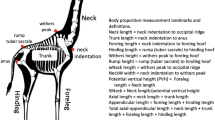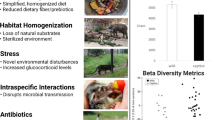Abstract
Carotenoid-based ornamentation shows great variability in Common Crossbill (Loxia curvirostra) males. Plumage colour ranges from dull yellow to bright red, but the majority of birds tend to be reddish-orange. It has been suggested that moult in this species is bimodal and that the extent of red feathering depends on the period in which feather development occurred. In this study, we analysed the relationship between timing of moult and male plumage colouration in a Common Crossbill population from the Catalonian Pyrenees (NE Spain). Our results demonstrate that the concentrations of dietary carotenoids necessary for the development of red colouration in this species vary significantly within seasons, and that the main time of feather development is apparently well adapted to the period of highest pigment availability in the environment. The intra-specific colour differences between males might be related to the ability to find food resources rich in red carotenoid precursors and to overcome the physiological processes involved in their metabolism, strongly suggesting that red colouration in Crossbills functions as an honest signal of condition and health status.
Zusammenfassung
Jahreszeitliche Schwankungen im Blutplasmaspiegel roter Karotinoid-Pigmente bei freilebenden Fichtenkreuzschnabel-Männchen Loxia curvirostra
Männliche Fichtenkreuzschnäbel (Loxia curvirostra) zeigen eine hohe Variabilität in der durch Karotinoide bedingten Färbung. Die Gefiederfarbe reicht von mattem Gelb bis zu leuchtendem Rot, die Mehrzahl der Vögel tendiert aber zu einem rötlichen Orange. Es wurde vermutet, dass die Mauser bei dieser Art in zwei Phasen (bimodal) verläuft und dass das Ausmaß der roten Gefiederpartien von dem Zeitraum abhängt, in dem die Federbildung stattfindet. In dieser Studie untersuchten wir die Beziehung zwischen dem Zeitpunkt der Mauser und der männlichen Gefiederfarbe bei einer Fichtenkreuzschnabel-Population aus den katalanischen Pyrenäen (Nordost-Spanien). Unsere Ergebnisse zeigen, dass die Karotinoid-Konzentrationen in der Nahrung, die zur Ausbildung der roten Färbung bei dieser Art nötig sind, eine signifikante jahreszeitliche Variation aufweisen, und dass die Hauptphase der Federbildung anscheinend gut an den Zeitraum der höchsten Pigmentverfügbarkeit in der Umwelt angepasst ist. Die intraspezifischen Färbungsunterschiede zwischen den Männchen könnten mit deren Fähigkeit zusammenhängen, Nahrungsquellen zu finden, welche reich an roten Karotinoidvorstufen sind, und die physiologischen Prozesse, welche an der Weiterverarbeitung im Stoffwechsel beteiligt sind, zu bewältigen. Dies ist ein deutlicher Hinweis darauf, dass die Rotfärbung bei Fichtenkreuzschnäbeln ein ehrliches Signal für die Kondition und den Gesundheitsstatus darstellt.



Similar content being viewed by others
References
Berthold P (1982) Endogene Grundlagen der Jahresperiodik von Standvögeln und wenig ausgeprägten Zugvögeln. J Ornithol 123:1–17
Berthold P, Gwinner E (1972) Frühe Geschlechtsreife bein Fichtenkreuzschnabel Loxia curvirostra. Vogelwarte 26:160–164
Borrás A, Cabrera A, Cabrera J (1996) Crossbills Loxia curvirostra feeding on cypress seeds. Butl GCA 13:53–55
Borrás A, Senar JC, Cabrera J, Cabrera A (2004) Trencapinyes Loxia curvirostra. In: Estrada J, Pedrocchi V, Brotons L, Herrando S (eds) Atles dels ocells nidificants de Catalunya 1999–2002. Institut Català d’Ornitologia (ICO)/Lynx, Barcelona, pp 532–533
Brush A (1978) Avian pigmentation. In: Brush A (ed) Chemical zoology, vol 10, Aves. Academic, New York, pp 141–161
Clouet M (2000) The breeding biology of the common crossbill Loxia curvirostra in the central Pyrenees. Bird Study 47:186–194
Conover WJ (1981) Rank transformations as a bridge between parametric and nonparametric statistics. Am Stat 35:124–129
Conover WJ, Iman RL (1982) Analysis of covariance using the rank transformation. Biometrics 38:715–724
Del Val E, Borràs A, Cabrera J, Senar JC (2009a) Plumage colour of male common crossbills Loxia curvirostra: visual assessment validated by colorimetry. Rev Cat Ornitol 25:19–25
Del Val E, Senar JC, Garrido-Fernández J, Jarén M, Borràs A, Cabrera J, Negro JJ (2009b) The liver but not the skin is the site for conversion of a red carotenoid in a passerine bird. Naturwissenschaften 96:797–801
Del Val E, Senar JC, Garrido-Fernández J, Jarén M, Borràs A, Cabrera J, Negro JJ (2009c) Hepatic conversion of red carotenoids in passerine birds. Naturwissenschaften 96:989–991
Deviche P, McGraw KJ, Underwood J (2008) Season-, sex-, and age-specific accumulation of plasma carotenoid pigments in free-ranging white-winged crossbills Loxia leucoptera. J Avian Biol 39:283–292
Fox DL (1976) Animal biochromes and structural colours. University of California Press, Berkeley
Génard M, Lescourret F (1987) The common crossbill Loxia curvirostra in the Pyrenees: some observations on its habitats and on its relations with conifer seeds. Bird Study 34:52–63
Ginn HB, Melville DS (1983) Moult in birds. British Trust for Ornithology, Hertfordshire
Goodwin TW (1980) The biochemistry of the carotenoids. Plants, vol 1. Chapman and Hall, London
Hill GE (1990) Female house finches prefer colourful males: sexual selection for a condition-dependent trait. Anim Behav 40:563–572
Hill GE (1991) Plumage coloration is a sexually selected indicator of male quality. Nature 350:337–339
Hill GE (1995) Seasonal variation in circulating carotenoid pigments in the house finch. Auk 112:1057–1061
Hill GE (1996) Redness as a measure of the production cost of ornamental colouration. Ethol Ecol Evol 8:157–175
Hill GE (2000) Energetic constraints on expression of carotenoid-based plumage coloration. J Avian Biol 31:559–566
Hill GE (2006) Environmental regulation of ornamental coloration. In: Hill GE, McGraw KJ (eds) Bird coloration, vol 1., Mechanisms and measurements. Harvard University Press, Cambridge, pp 507–560
Hill GE (2011) Condition-dependent traits as signals of the functionality of vital cellular processes. Ecol Lett 14:625–634
Hill GE, Johnson JD (2012) The vitamin A-redox hypothesis: a biochemical basis for honest signalling via carotenoid pigmentation. Am Nat 180:E127–E150
Hill GE, Montgomerie R (1994) Plumage colour signals nutritional condition in the house finch. Proc R Soc Lond B 258:47–52
Jenni L, Winkler R (1994) Moult and ageing of European passerines. Academic, London
McGraw KJ (2006) Mechanics of carotenoid-based coloration. In: Hill GE, McGraw KJ (eds) Bird coloration, vol 1., Mechanisms and measurements. Harvard University Press, Cambridge, pp 177–242
McGraw KJ, Hill GE, Stradi R, Parker RS (2001) The influence of carotenoid acquisition and utilization on the maintenance of species-typical plumage pigmentation in male American goldfinches (Carduelis tristis) and northern cardinals (Cardinalis cardinalis). Physiol Biochem Zool 74:843–852
Mínguez-Mosquera MI (1997) Clorofilas y carotenoides en tecnología de alimentos. Secretariado de Publicaciones de la Universidad de Sevilla, Sevilla
Mínguez-Mosquera MI, Hornero-Méndez D (1993) Separation and quantification of the carotenoid pigments in red peppers (Caspicun annuum L), paprika and oleoresin by reversed-phase HPLC. J Agric Food Chem 41:1616–1620
Nethersole-Thompson D (1975) Pine crossbills. Poyser, Berkhamsted
Newton I (1972) Finches. Collins, London
Pulliainen E (1972) Summer nutrition of crossbills (Loxia pytyopsittacus, L. curvirostra and L. leucoptera) in northeastern Lapland in 1971. Ann Zool Fenn 9:28–31
Rimckevich TA (1990) Moult of passerines of north western USSR. Izd. Leningradskogo Universiteta, Leningrad
Rower SA (1983) Testing the female mimicry hypothesis of delayed plumage maturation: a comment on Procter-Gray and Holmes. Evolution 37:421–423
Rower SA, Manning J (1990) Differences in timing and number of moults for Baltimore and Bullock’s Orioles: implications on hybrid fitness and theories of delayed plumage maturation. Condor 92:125–140
Senar JC, Borrás A, Cabrera T, Cabrera J (1993) Testing for the relationship between coniferous crop stability and common Crossbill residence. J Field Ornithol 64:464–469
Stradi R (1998) The colour of flight. Solei Gruppo Editoriale Informatico, Milan
Stradi R, Rossi E, Celentano G, Bellardi (1996) Carotenoids in bird plumage: the pattern in three Loxia species and in Pinicola enucleator. Comp Biochem Physiol B 113:427–432
Svensson L (1992) Identification guide to European passerines. L. Svensson, Stockholm
Ticehurst CB (1915) On the plumages of the red crossbill (Loxia curvirostra). Ibis 10(3):662–669
Tordoff HB (1954) Further notes on plumages and moults of red crossbills. Condor 56:108–109
Weber H (1953) Bewirkung des Farbwechsels bei männlichen Kreuzschnäbeln. J Ornithol 94:342–346
Weber H (1972) Über die Fichtenkreuzschnabelinvasionen der Jahre 1962 bis 1968 im Naturschutzgebiet Serrahn. Falke 19:16–27
Acknowledgments
We thank Nuria Fernández, Isabel García and Llüisa Arroyo for helping in the laboratory and Xavi Colomè for field assistance. Dr. Marc Förschler and two anonymous referees kindly provided useful comments on the manuscript. We are grateful to Dr. George Britton (School of Biological Sciences, University of Liverpool, UK) who provided us with the standard of 3-hydroxy-echinenone. This work was founded by Research Projects CGL2006-07481 to J.C.S., J.J.N., J.G. and M.J., CGL2012-38262 to J.C.S. and J.J.N., and the FPI Grant BES2004-5631 to E.D.V. (Ministerio de Ciencia y Tecnología). Birds were handled under permission of the Catalan Ringing Office (ICO) and the Departament of Medi Ambient, Generalitat de Catalunya.
Author information
Authors and Affiliations
Corresponding author
Additional information
Communicated by L. Fusani.
Rights and permissions
About this article
Cite this article
del Val, E., Negro, J.J., Garrido-Fernández, J. et al. Seasonal variation of red carotenoid pigments in plasma of wild Crossbill males Loxia curvirostra . J Ornithol 155, 211–218 (2014). https://doi.org/10.1007/s10336-013-1002-z
Received:
Revised:
Accepted:
Published:
Issue Date:
DOI: https://doi.org/10.1007/s10336-013-1002-z




